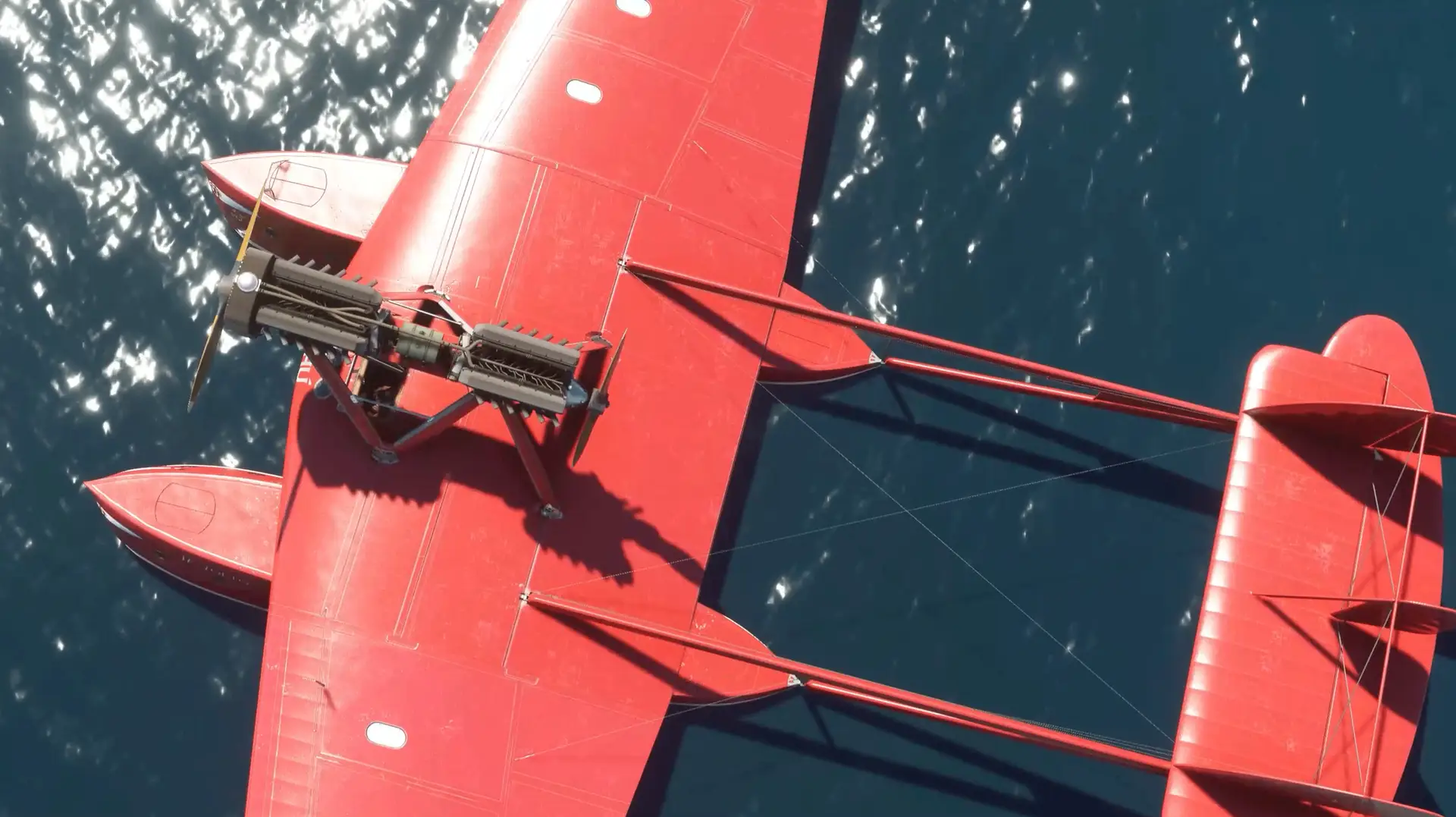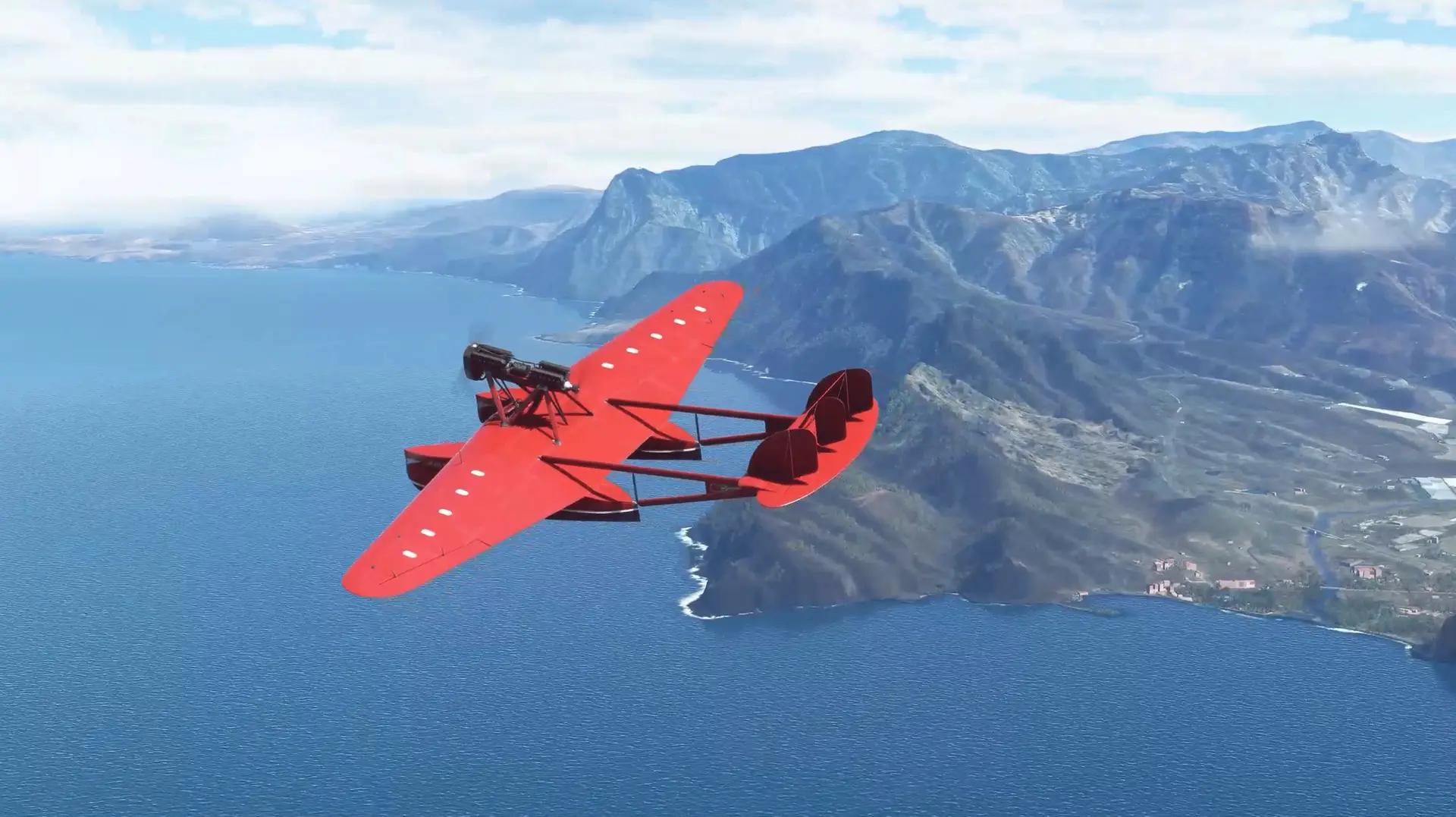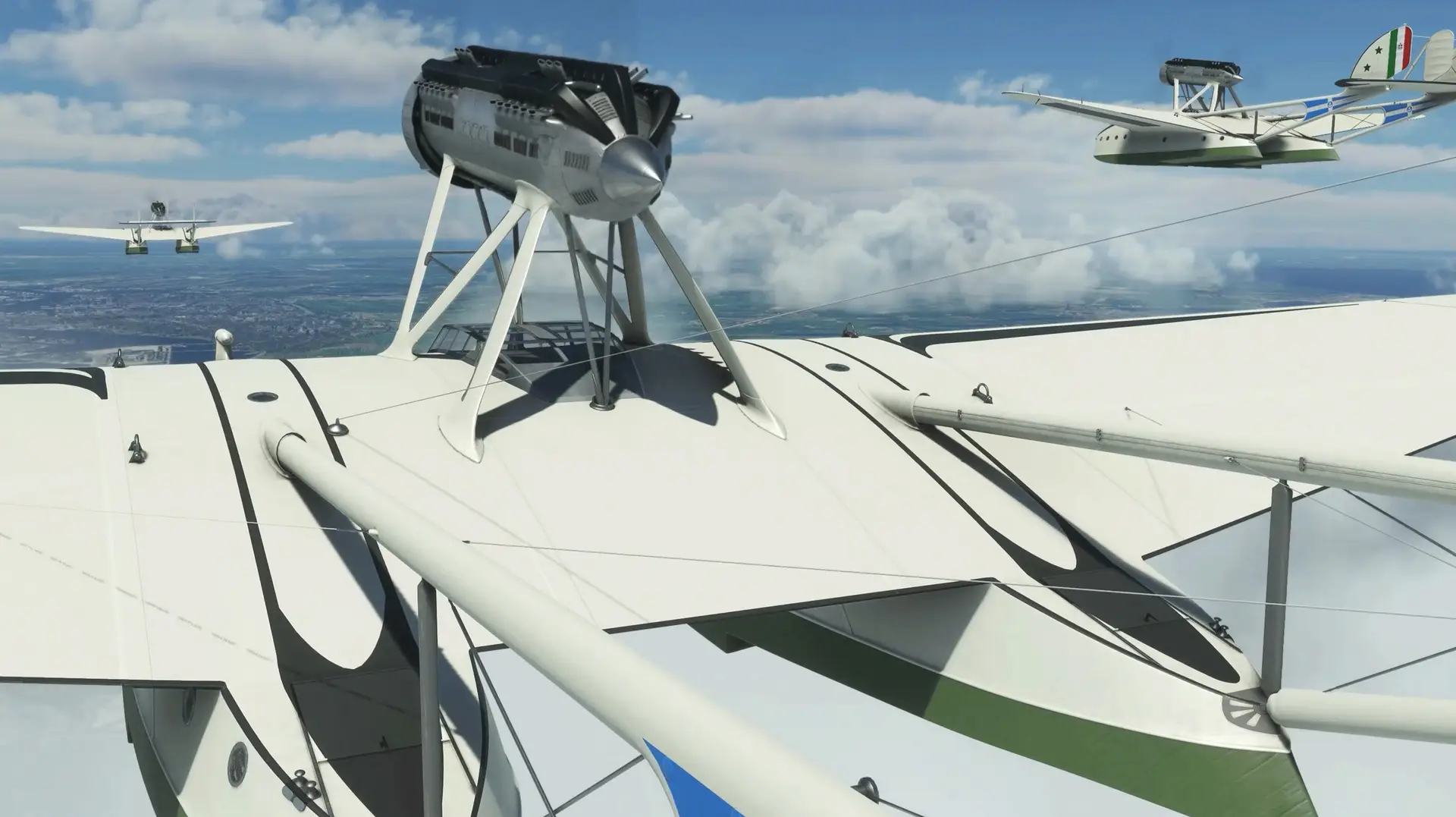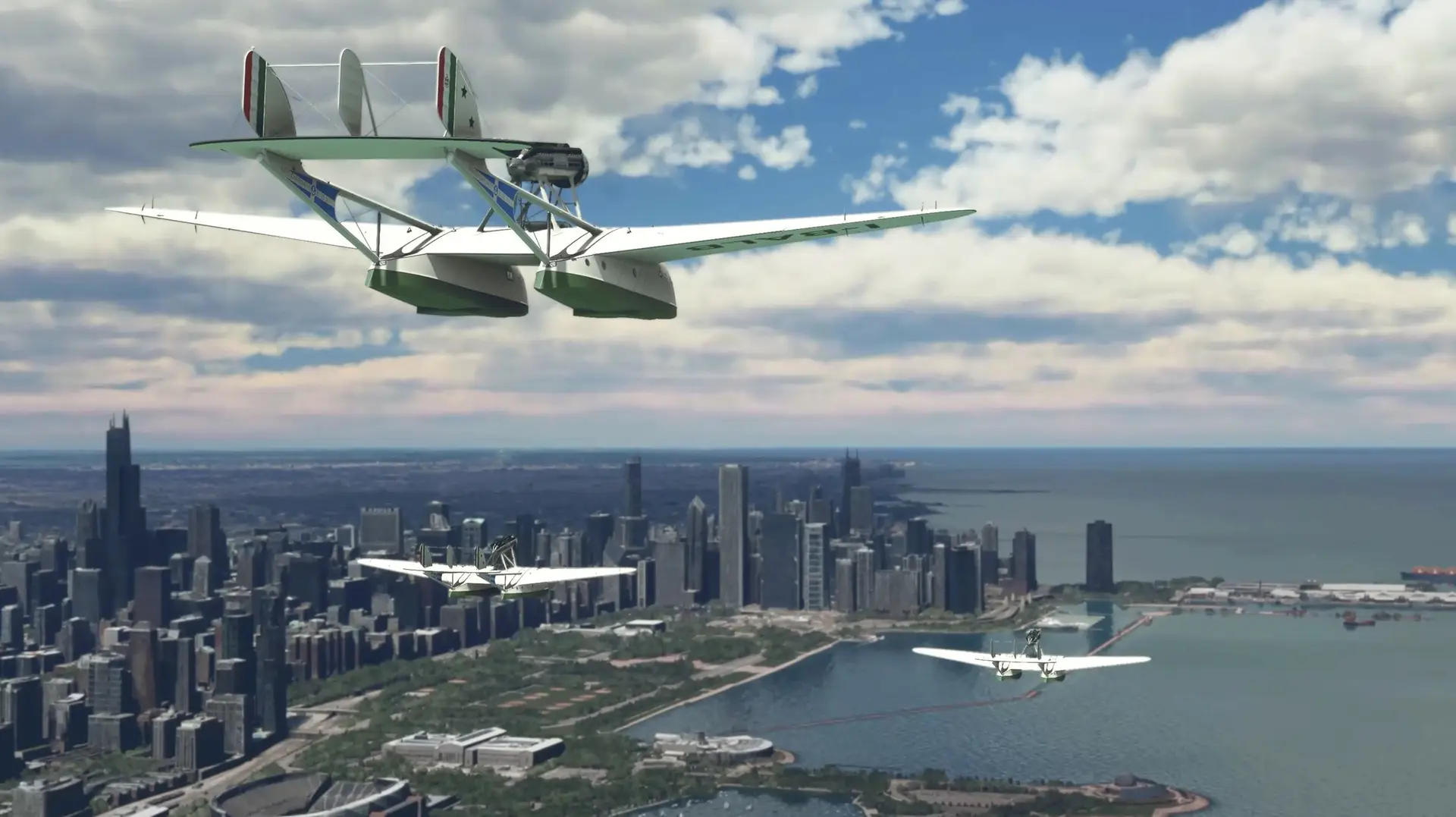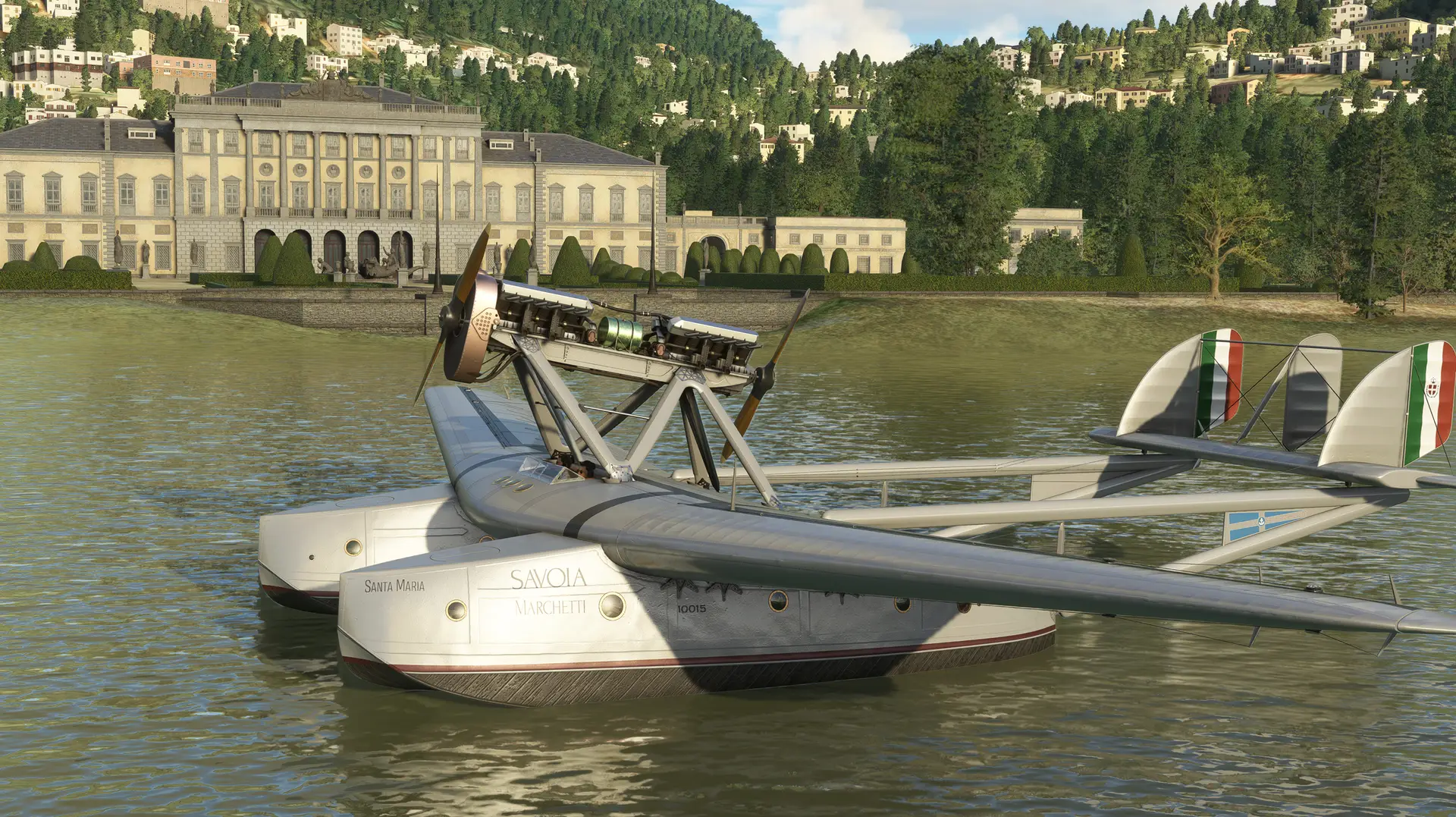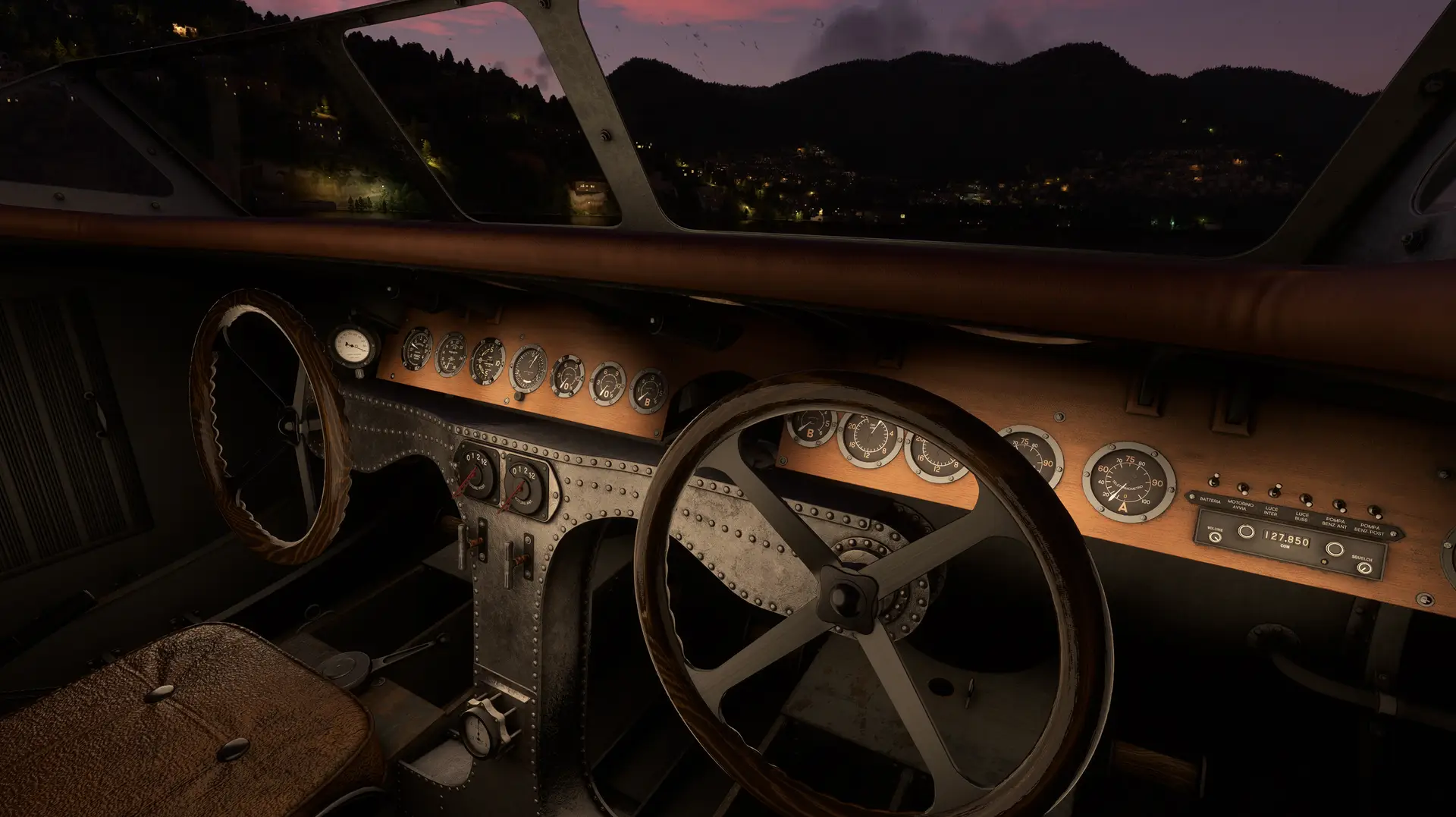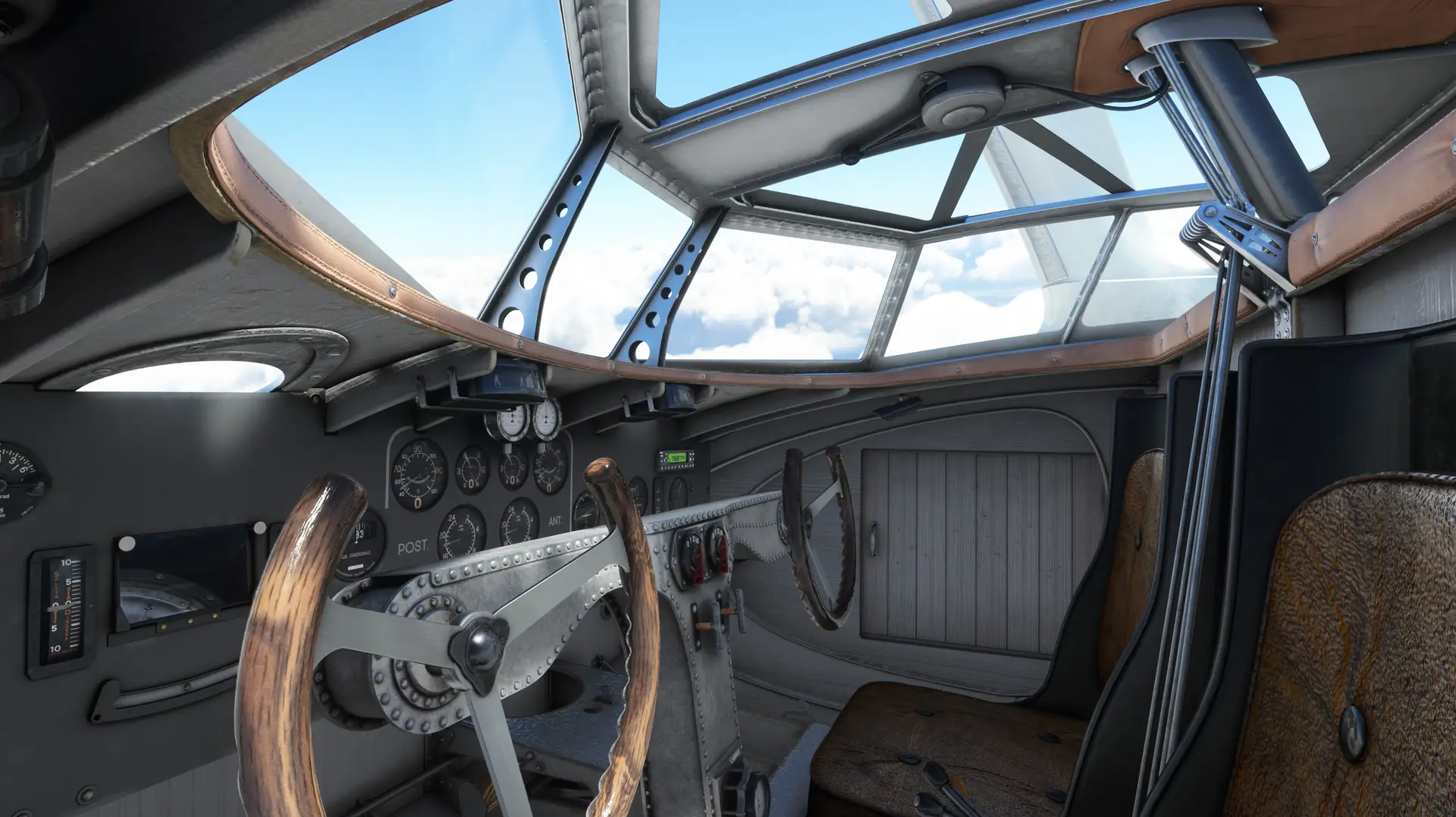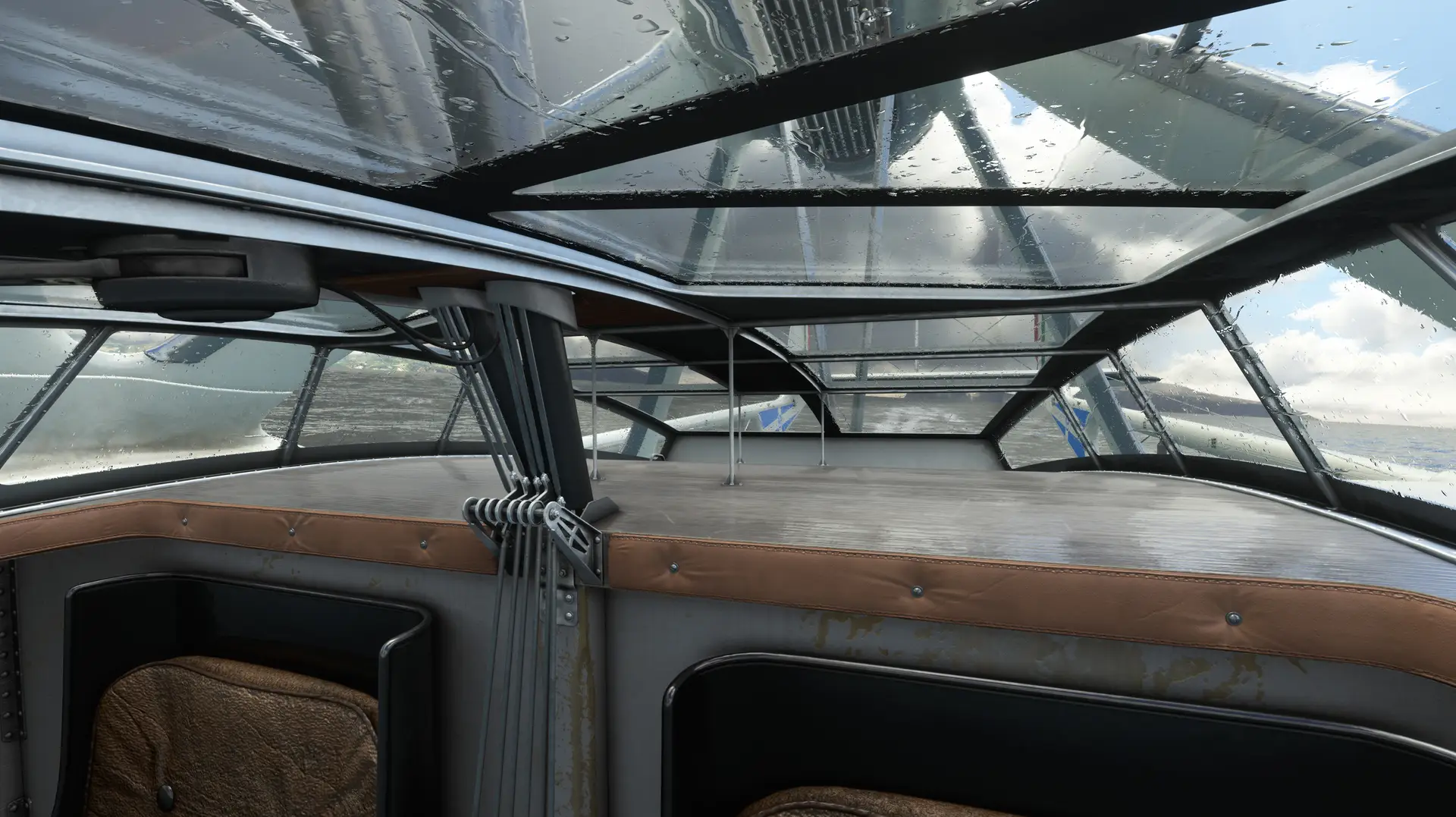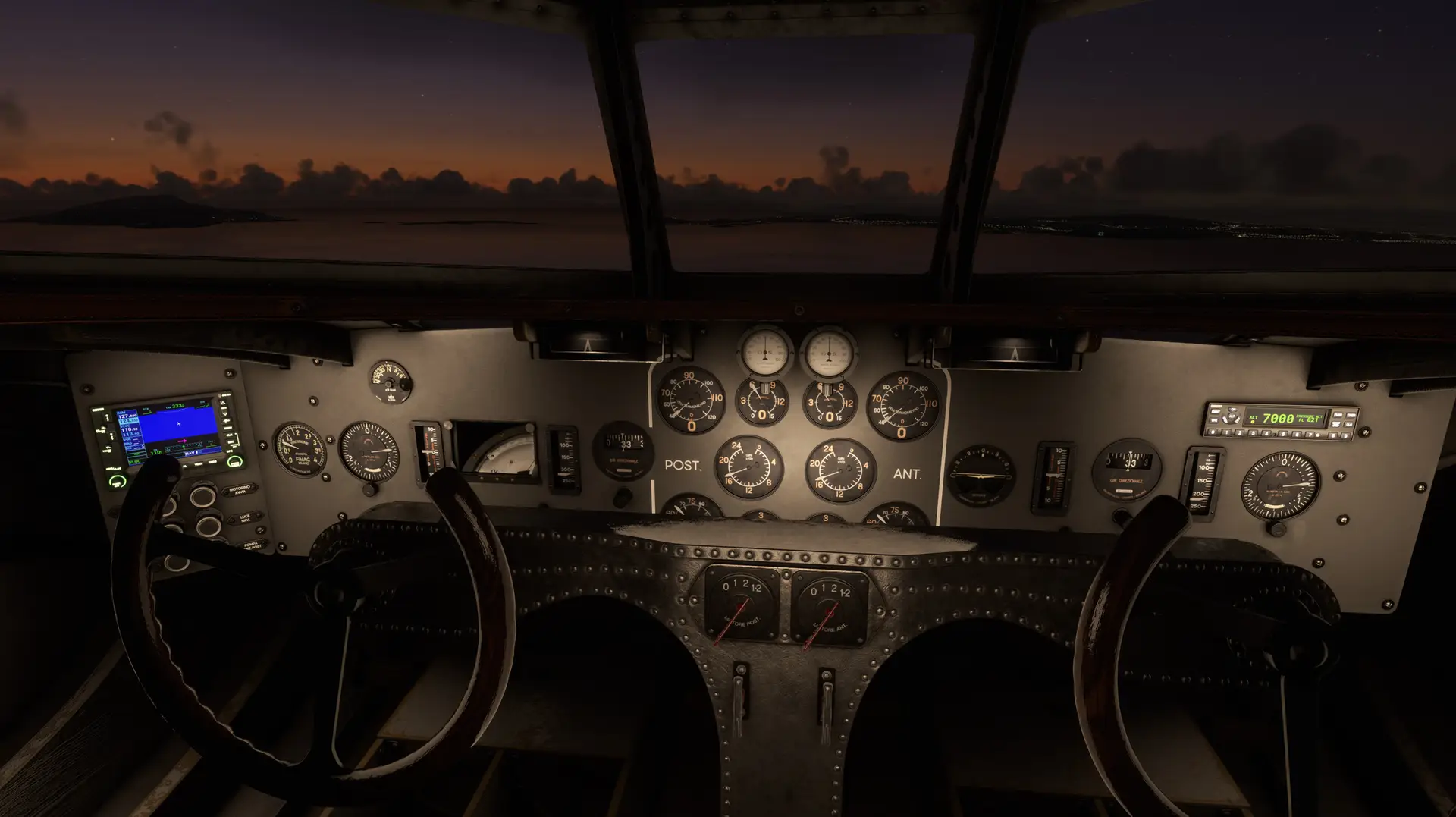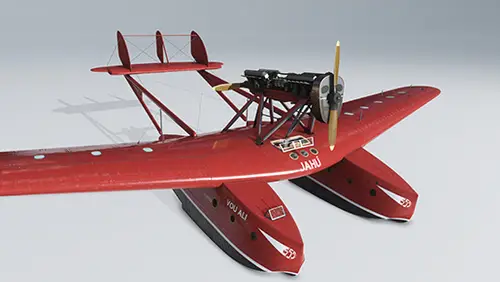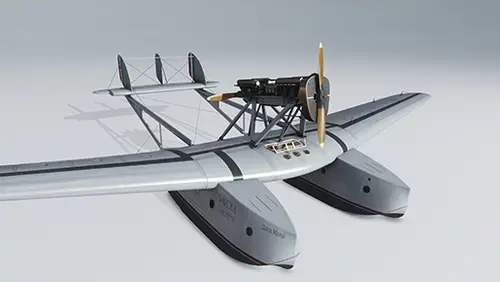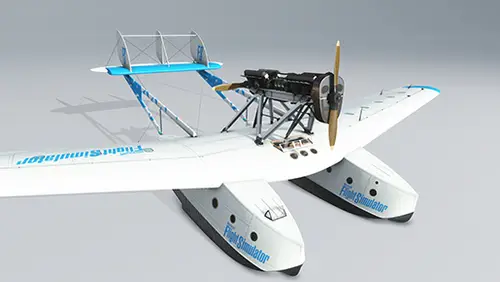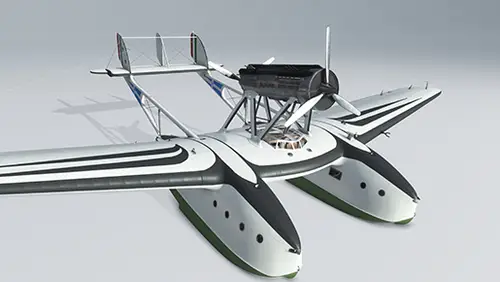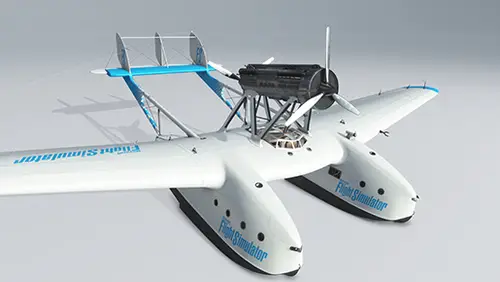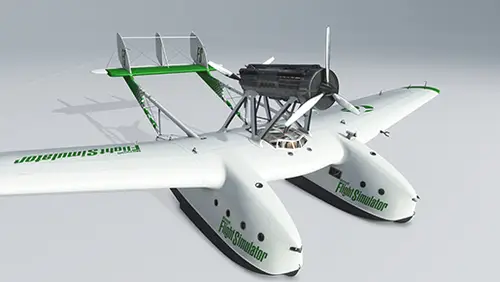The S.55 is a twin-engine flying boat produced by Italian aviation manufacturer Savoia-Marchetti of Milan. The S.55 took its maiden flight in August of 1924 and entered service in 1926. Flown by both military and civilian users, the S.55, of which roughly 250 were produced, set a number of world aviation records shortly after its introduction and was used for long-endurance flights, including several notable transatlantic journeys.
The S.55 is one of the most distinctive aircraft ever produced. It features a twin-hull catamaran design, each with a boom extending to the tail unit, and an empennage that consists of a horizontal stabilizer and three vertical fins with two rudders. While the two hulls are used for passengers, cargo and fuel, the cockpit resides in the forward portion of the main wing. The S.55 measures 54 feet, 2 inches in length, has a wingspan of 78 feet, 9 inches, and some versions can carry up to ten passengers in addition to its two pilots and four crewmembers.
The prototype and early production aircraft are powered by two V-12 Isotta Fraschini Asso 500 engines, each producing up to 510 horsepower. The engines are mounted on a truss atop the centerline of the main wing in a pusher–tractor configuration with contra-rotating 2-bladed wooden propellers. The final production S.55X model features a pair of W-18 Isotta 750 engines, producing up to 800 horsepower, and is fitted with 3-bladed metal propellers. The early S.55s have a range of up to 2,200 miles without passengers, a top speed of 110 miles per hour, and a ceiling of 10,000 feet above sea level. Later models have an equivalent range, but increased speed and altitude limits to 173 mph and 16,000 feet respectively. Both types have a stall speed of 65 mph, a remarkable feat for such a large aircraft.
The Savoia-Marchetti S.55 remains one of the great icons of the world of flight. A unique design that is both attractive and functional, this flying boat leaves virtually no place on the planet out of reach to aviators. While it was not the first aircraft to cross oceans, it was the first to do so reliably and safely enough to make transatlantic passenger service flights seem feasible, and even inevitable.
